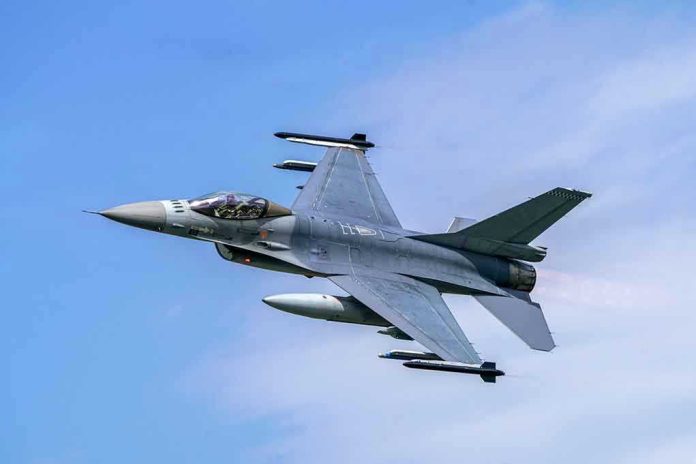
A new show of military might reaffirms U.S. commitment to global security, unsettling adversaries.
Story Highlights
- The U.S. Air Force conducted another B-1B Lancer flight near a sensitive region in October 2025.
- This action is part of a broader strategy to demonstrate military strength and deter potential threats.
- These flights have been increasing in frequency, coinciding with periods of heightened tension.
- Regional allies are reassured, while adversaries like China and Russia are on alert.
Strategic Deterrence with the B-1B Lancer
The United States Air Force recently executed a high-profile mission involving the B-1B Lancer, flying near a sensitive region in late October 2025. These strategic bomber flights are designed to reassure allies and deter potential adversaries. The use of the B-1B, known for its large payload and long-range capabilities, underlines the U.S. commitment to maintaining military superiority and upholding international norms.
The B-1B Lancer flights are part of a larger pattern of strategic military actions, highlighting the U.S. Air Force’s readiness and resolve. Since the end of the Cold War, the B-1B has played a crucial role in conventional conflicts across various regions, including the Balkans and the Middle East. The recent flights align with the U.S. strategy of showcasing military reach and supporting regional security architectures, particularly amid rising tensions with peer competitors such as China and Russia.
Key Stakeholders and Motivations
The primary stakeholders in these missions include the United States Air Force, the Department of Defense, regional allies, and potential adversaries. The USAF is tasked with demonstrating readiness and projecting power, while the DoD sets strategic objectives for bomber deployments. Allies like Japan and South Korea seek reassurance against regional threats, whereas adversaries aim to test U.S. resolve and respond with counter-messaging.
The power dynamics involve the U.S. maintaining air superiority, although challenges arise from adversaries enhancing their air defenses. Decision-makers, including senior military leadership and civilian defense officials, play pivotal roles in determining the timing and scope of these bomber missions.
Implications of the Bomber Missions
In the short term, these flights signal U.S. resolve to adversaries and offer reassurance to allies, potentially escalating regional tensions. Long-term implications involve sustained bomber presence deterring aggression, though it may also provoke arms races or increased military posturing by adversaries. The economic impact includes heightened defense spending, while politically, these flights can become focal points in diplomatic negotiations.
Public perception of security may fluctuate based on perceived threat levels, affecting social dynamics. The defense aerospace sector benefits from ongoing upgrades and maintenance contracts for the B-1B Lancer, influencing regional security dynamics and defense procurement policies.
Sources:
Rockwell B-1 Lancer – The Aviationist
B-1B Lancer – U.S. Air Force Fact Sheet
B-1 – Air & Space Forces Magazine



